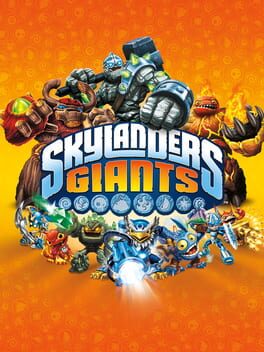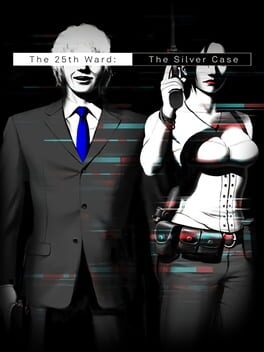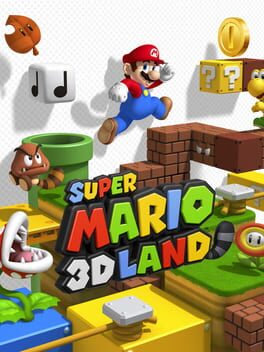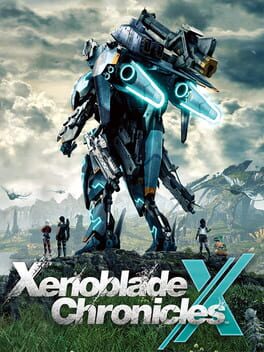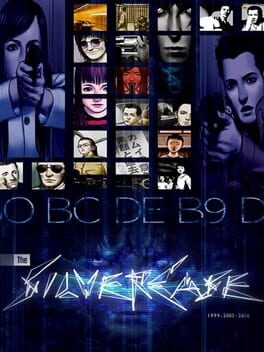Fingerschmaus
weise
gaming systems currently owned: Wii, Wii U, NES/SNES mini, Pokemon Mini, Nintendo Switch, 3ds, new 3ds, ds, Gameboy Advance, Gamecube, Xbox 360, Xbox one, PS3, PS Vita, Sega Dreamcast, Xbox Series X, Playdate, PS2,
Badges

Gone Gold
Received 5+ likes on a review while featured on the front page

Adored
Gained 300+ total review likes

GOTY '23
Participated in the 2023 Game of the Year Event

Trend Setter
Gained 50+ followers

Pinged
Mentioned by another user

Early Access
Submitted feedback for a beta feature

GOTY '22
Participated in the 2022 Game of the Year Event

Clearin your Calendar
Journaled games at least 15 days a month over a year

Elite Gamer
Played 500+ games

2 Years of Service
Being part of the Backloggd community for 2 years

Full-Time
Journaled games once a day for a month straight

Shreked
Found the secret ogre page

Loved
Gained 100+ total review likes

Popular
Gained 15+ followers

Roadtrip
Voted for at least 3 features on the roadmap

Best Friends
Become mutual friends with at least 3 others

Donor
Liked 50+ reviews / lists

Busy Day
Journaled 5+ games in a single day

Well Written
Gained 10+ likes on a single review

GOTY '21
Participated in the 2021 Game of the Year Event

Liked
Gained 10+ total review likes

Gamer
Played 250+ games

Noticed
Gained 3+ followers

On Schedule
Journaled games once a day for a week straight

N00b
Played 100+ games
Favorite Games
700
Total Games Played
029
Played in 2024
207
Games Backloggd
Recently Played See More
Recently Reviewed See More
I do have a theory of why I think this criticism comes up so much more with this game than its predecessor Legacy of Kain: Soul Reaver, which already is the sequel to a completely different kind of game; as the moment you are done watching the opening cutscene, which shows you the final moments of LoK: SR and start controlling Raziel again, the game lulls you in the belief that this is but an expansion to the previous game.
Even to someone like me, who played the first game using a Dreamcast-controller and has barely ever even held a PlayStation 2-controller, when starting out with the game, controlling Raziel will feel eerily similar to how it was before. A few changes you will probably notice is how you won’t be able to shoot out the Energy Projectile, without aiming it anymore, with the button now reacting with a strong/heavy-attack, when you aren’t. This will be your first clue that Raziel never changed, it was the structure surrounding him that did.
Soul Reaver 2, unlike the 3D-metroidvania that was Soul Reaver (1), is a linear, action focused. This big change to the structure wasn’t done without reason though, as the story basically hits you over the head with how there is no such thing as free will and Raziel basically only doing everyone else’s bidding, even when he tries his best to avoid it.
Most changes can be traced back to that reasoning and I will start with the biggest one being the new and expanded combat system.
Soul Reaver 1 had a combat system, which in the best case, had you on the lookout for any weapons before confronting an enemy, as you wouldn’t have been able to defeat them otherwise. It was a combat system that incentivized the player to explore their environment and search for optional content, so it wouldn’t have fit here if it wasn’t changed and I believe the way they went about it to be really interesting, and it serves as a great example of Crystal Dynamics design-philosophy, when creating this sequel, of trying to not change the systems, but rather the structure around them to achieve something vastly different with them.
All the moves, you know and love from the first game, return, with only stealth and the energy projectiles receiving nerfs, they also expanded on it by allowing you to dodge into an enemy, without attacking, heavy-attacks and a complete overhaul of how the Soul Reaver works.
While I think the first two additions really helped making combat feel more expressive and get even better as you learn how to appropriately combine these two with the mechanics passed on from the first game; I believe the changes to the Soul Reaver to be at best misguided, as they nerfed it heavily, while at the same time trying to convey it being more powerful in the story.
Due to being able to call upon the Reaver at the press of a button at any time now, instead of it appearing at full health, it does not halt the constant draining of Raziels health anymore, which is also made more potent than ever in this game.
This was also not done without reason, as the only way to recover that lost health is to, you guessed it, reaving the souls of any enemies around. This in theory would work as great incentivization to dabble in the expanded combat system, but it was way to overtuned and became a great annoyance; made even worse by the fact that the game already has enough ways of incentivizing the player to defeat enemies, such as trapping you in a closed room with them, something that happens more frequently as the game goes on and towards the end went to such extremes that it tacked on at least another hour of playtime; and giving the weapons you need to quicker deal with enemies to the enemies themselves, which works as a fun little parallel to how the system worked in the prequel.
Just like in Soul Reaver (1), Raziels moveset is expanded upon in this game by visiting dungeons, which on paper is the logical thing to do. The problem is that these dungeon designs were the most hit or miss part for me, ranging from one of the best in the series thus far, to making me imagine Sisyphus as a blessed soul and easily the worst part of the game.
The dungeon design philosophy of Soul Reaver, which I talked about more in my review of that game, was mostly scrapped, probably because you barely have to revisit them, now being more akin to what you would see in a 3D-Zelda game, being built around a central room with branching paths. The puzzles you will find in the so called forges are mostly centered around doing the most obvious things enclosed in one room, located directly next to the central chamber. Most of these will have you just mindlessly interact with the first thing you see and have that be the whole “puzzle.”
When you finally reach the end of a forge the Reaver will absorb its energy and you will be able to use said energy for the puzzles of the next dungeon.
This mechanic, unfortunately, is entirely underbaked as elemental Reavers, to my best understanding, do not/have minimal impact on combat encounters, the thing the whole game is centered around, and their abilities are very similar in usage, being limited to interacting with other panels on the ground, most of whose only discernible trait being the symbol of the kind of Reaver you need to interact with them on it; and being able to shoot different stuff.
I might have made it sound more boring as I should have as the light and air Reaver came into great use in Janos Audron’s Retreat, the best dungeon in the game, and the puzzles centered around having to get somewhere with a different kind of Reaver and their own set of skills were really fun, albeit due to their nature could only ever be present in the later dungeons/forges. The dark Reaver centered puzzles were the worst offender and can be summarized to: ”get zapped by giant eyeball you didn’t see, search for a way to go back to the material realm, go get the dark reaver, shoot the eyeball” and I can’t really talk much about the fire-Reaver, as it was only used once in the whole game, due to the story and gameplay developing somehow asymmetrically.
The puzzles not centered around the Reaver were also a mixed bag and mostly straight up bad. One of these is the way you enter Janos Audron’s Retreat.
Soul Reaver 2 will see you exploring a few select places in Nosgoth during different times, a concept that sounds way better in theory. One of these places is the entrance of Janos Audron’s Retreat, which the first time around will serve as the entrance of the air-forge. If you ever get sent to the spectral realm there, which may happen as the difficulty suddenly spikes around this point in the game, and fall in the lake you will have to slowly be defeated by Sluagh, as there won’t be a way to go back to the material realm down there, which I, unlike in the first game, wouldn’t categorize as a softlock here, because the change of the saving system caused the creation of checkpoints, thus you won’t be sent to the start of the game.
While the checkpoint isn’t far from that point it still caused me to not ever want to change to the spirit realm around there again. So, when I had to revisit this location around 1-2 hours later and the game outright told me to do so to progress, I was understandably cautious and searched around the perimeter for any other solution. This should never have been an issue in the first place and, in my opinion, describes a lot of this games puzzle design.
One advantage you have when developing a sequel is hindsight and the publics reception of your previous work and this game does try to fix a lot of the issues, I had with its predecessor. For one this game does have an in-game-map, which I never used as the entirety of Soul Reaver 2 is taking place on a linear path, which is small enough to be memorized in its entirety.
The most baffling change was their reaction to both the handling of the glyphs and boss fights being that they completely removed them, as I would have loved their take on them, in a game that is able to focus on them more thoroughly due to being, say it with me, an action-adventure and in the case of the glyphs, not being optional anymore and having them actually be part of a combat system that can support them. They would’ve also helped fix the problem of the lack of an ability to break the blocks of enemies.
The camera and drawing distance were my biggest criticism of Soul Reaver and are not a problem anymore, as they have been completely reworked and benefit from the stronger hardware.
This might be the perfect time to mention the great presentation and story accompanying it. This game at points looked like an early Xbox 360 game, rather than early PS2. The Sarafan Stronghold might just be one of the most beautiful places I have visited in any game ever. While not as impressive as SR1, this game is still a technical marvel.
I won’t get into the story here as to avoid spoilers, just know it is the best one of the series yet, which is saying a lot. It does suffer from some pacing issues during the middle, but it does wrap up nicely and, in the process, manages to answer some questions from both previous games.
While I might have sounded overly negative during most of the review, that it stems from a place disappointment with how they went about the changes rather than contempt for the game. And then again, most of that does feed into the story and therefore makes it better; and while I have obviously not done so yet I believe they make this game more replayable, as the linearity makes it more easily digestible. Most of my criticisms were also most noticeable during the part between the dark- and shortly before the air- forge, after which the game gradually became better.
When looking back on it, I doubt Soul Reaver 2 will leave as much of an expression on me as its predecessor did, but that doesn’t change the fact that it is an easy recommendation to anyone eager to see Raziels story unfold, as I have the premonition that this might just be its beginning.
For me that game was Legacy of Kain: Soul Reaver, a game whose existence has fascinated me way before I ever got the chance to play it, just as it does now after finally completing it; my playthrough spanning around two years.
My fascination of Soul Reaver sprung of, from another fascination of mine. I was born in 2004 and thus barely missed the time Sega was a competitor in the console business. They might just have the most interesting history in videogames and that is what made me suddenly really want to own a Dreamcast in 2021. Browsing through some of the more well received games for the console, I came across a relatively little-known game with maybe 500 logged players on this very website and a respectable rating, you probably know where this is going.
Looking up “Legacy of Kain: Soul Reaver” on YouTube, I found a ton of people singing its praises, especially when it comes to its story; it was then that I realized I needed to play this, and I eventually did.
Back in January I released a Blood Omen review (which I don’t recommend reading), in which I stated multiple reasons, of why I might’ve stopped playing Soul Reaver and while they may have been a contributor as to why, they weren’t the main reason. Truth is, I didn’t enjoy the game very much.
While I could derive enjoyment out of the technical prowess and it’s devotion to telling it’s grandiose story without having to read a single word of text, it was the gameplay that kept the game from actually clicking with me and reading some of the reviews at the time, this wasn’t just an issue I had with it.
The game just isn’t nice to people who are conditioned to all the modern QoL improvements the industry has been blessed with, combat being the biggest offender to me back then.
So during the last hours of last year, only a day after completing this games predecessor, I sat myself down with my phone on a “tripod”, which I had constructed using a selfie-stick, when I was 12 years old and wanted to become a YouTuber, recording my whole journey through this game (which I unfortunately can’t share as I also used it as a form of a video diary) and most importantly started from a new profile, as I thought I might’ve missed something with the combat-system back then and therefore wanted to experience that opening hour, which made me shelve the game, a little more than a year ago, again.
And I was right, the moment I started playing Soul Reaver again, I couldn’t stop doing so and do now really enjoy what they tried to do with its combat and its way of incentivizing the player to scour your surroundings.
Every encounter you have with an enemy at the beginning of the game will play out like its own little puzzle, as for any non-human enemy-type you will not only have to beat them up, as they cannot die, but when they are stunned, find an object to finish them off and devour their soul. Said object of interest may be a spear, that skewers them, but it can also be a light source, a spiky part of the walls surrounding you, a campfire, an accumulation of water and many more.
Your creativity is only aided the longer you play as you might find enemies immune to one of these methods together with others that aren’t and now plan your fight accordingly.
The moment I got the titular Soul Reaver, which is basically able to defeat any enemy, I was worried that this would be detrimental to the combat-system, but rather than relying on it further on it would only proof as a new option in Raziel’s kit, as it will only be available to use at full-health (in the Material-Realm) which isn’t always sustainable.
Talking of which, the game incorporates a system of switching between realms. Not only are both loaded at any given time, but the game will remember every location of everything you have/haven’t ever interacted with. I cannot start to think what kind of sorcery this would’ve needed to be pulled of in the 90s, or even today for that matter. And when I see every object, I really mean that. During backtracking, which is mostly optional, but you are really missing out on some amazing side-content if you chose not to engage with it, I found myself thinking “oh I remember putting that there.” or “oh yeah that enemy followed me here back then, didn’t it?”, more times than I can count.
Outside of combat your gameplay will be spend exploring the landscapes of Nosgoth, which have changed a lot since your last adventure. If I had to compare the changes to anything, it would be how Gotham City changes during the Dark Knight trilogy, with it basically functioning as its own character in Begins, and existing as a background to the narrative of The Dark Knight, the only difference being, that I didn’t see this as detrimental in this case.
Nosgoth is definitely more videogamey here in the sense that the game starts you of with a platforming tutorial at a place that only exists, because you need to learn how to platform at some point, but these extreme cases are few and far between, as the game also has its high points of its world-design at pretty much all the major locations.
For example, the entrance to the Human Citadel is flooded to keep out vampires and only houses one of Rahab’s’ tribe, which evolved to swim over time. But if you change to the Spectral Realm, it will be the home of many more Sluagh than regular, which feast on all the lost souls.
The Human Citadel is a masterclass in level-design for a 3D-Zelda like game in general. I got there shortly after defeating Melchiah, at the beginning of the game and spend almost an hour just exploring and thinking I had seen most if not everything it has to offer. I then went on going back there after each new acquired ability and not only realized that my previous assessment was totally wrong, but that I had yet to explore the majority of its content. I have rarely seen a, dare I mention totally optional, location that opens up so much after each new chapter of a game.
This serves as a microcosm of Lok’s design, which is built around the fact that you may save at any time. But as I already mentioned, saving will not bring you back to your previous location, no it will bring you back to the beginning of the game, where you can select between fast-travel points; but rather save the location of every object, which serve as shortcuts.
This is demonstrated best with this game’s dungeons, which are in my opinion far better designed than any 3D Zelda dungeon, I have experienced.
Now they also aren’t close to being perfect. The Silenced Cathedral has an intentional softlock, if you enter the Spectral Realm in the wrong room, but said softlock, funnily enough, also signifies the biggest strengths of Soul Reaver’s non-linear dungeons, as even if you get trapped in a room, you can always save your progress and therefore barely lose any progress.
Was it still demoralizing? Yes, of course, you can observe a big gap in my playtime after it happened, after it happened to me, but the second I started to play again, I realized that what had taken me half an hour to get to last time, only takes around five now, as you can see (epilepsy warning) here, because every puzzle was already solved and serving as a short-cut, I never really lost my progress.
I won’t argue that softlocks are good game design of course, just saying that they would be more detrimental when they occur in any other game, because of how good this one is designed to accommodate that issue.
The dungeon design in general is more akin to a Metroid-Vania, as you will go through it without any new abilities, and see many points of interest, which you will then later check out after acquiring said ability after defeating the boss, which also uses it against you.
I won’t spoil any of the secrets, but the way your view of the Drowned Abbey changes, just by you being able to traverse the waters in the Material Realm could be a whole paragraph on its own.
Now the game (still) isn’t perfect, and I still have my own gripes with it, withholding me from replaying it anytime soon.
For one, this isn’t a game I can just sit down and enjoy, as you really must lock-in and search any nook and cranny for maximum enjoyment, something helped by the fact I recorded my playthrough and could easily rewatch any points of interest. If I didn’t have that, I would’ve probably had to look up a guide at some points, due to the lack of an in-game map.
Combat also can still be a bit tedious and it’s often just better to right-out ignore any enemies. The glyphs were more fun to hunt down, than use. The boss fights, while cleverly designed to be puzzle boxes where you must find your enemies weakness, and use your surroundings, to defeat them rather than hand-to-hand combat, still mostly don’t put up much of a fight.
The drawing-distance and camera are hurt by the hardware and unfortunately the fact that the world is constantly loaded twice, which probably is no issue when playing the fan-made HD-remaster, which was good enough to get the people responsible for it noticed by Crystal Dynamics and got them to work on the recent Tomb Raider remasters.
And that is not even touching on this games story, which is expectingly great coming off such a great basis, being Blood Omen.
Legacy of Kain: Soul Reaver is not just a cornerstone of the medium as a whole and one of the most technically impressive games ever made, it is also one of the best games I have ever played and made me even more happy with my recent acquisition of a PlayStation 2, including every sequel of this game.
Soul Reaver will now, and the foreseeable future, be that game; that one game I always continue to think about and will always remember.
After the announcement of the release date, around two weeks ago, even after playing through this game, it still doesn’t feel real to finally own it after this long time, so I probably don’t have to describe how high my expectations for this game were.
Did it meet said expectations?
Yes!
Did it exceed them?
No, but that should never be a standard to hold anything on now, should it?
Mars After Midnight is another entry in Lucas Pope’s paperwork series and is (to my knowledge) the first one based around a job that has yet to exist.
You will see yourself as the owner of a Martian-help-center and work at the reception while finding out which Martian, Robot or even Human needs help. The ways of going about this are relatively simple. Some you can deduce, for some you need to use a device and for others both, just know that there are always 6 Martians that need any given kind of help.
After letting someone in, they may eat some refreshments and may leave a mess, which you may have to clean up for the next customer to dabble in said refreshments. After the session is done you get two Mars-Dollars for every right customer. These Mars-Dollars can then be used to advertise, buy food etc. for the next Martians. They can also be spend on items or new treatments, sold by a merchant that shows up every day.
Planning out your next day is always fun, with you looking at the map of your colony, with the living quarters of the six Martians you want to attend being highlighted and picking out where to advertise and which food is most popular at any given place, every day. The only issue I had with this is that it disincentivizes experimenting with new foods, as the cleaning-up process, the only one with a timer, will be different with every item of food. Furthermore the first item of food doesn’t only cover a lot of area, but becomes the easiest to clean up with your dependency on it in the early game.
I’m conflicted on the amount of Martians you have to get right, as 6 is pretty much the perfect amount, if you fail, as you will have more than enough time to deduce what you did wrong, but it does get a bit repetitive if you instantly know what to do and now have to go through a random amount of visitors to pick out the six obvious candidates. This small issue gets heightened by the fact that this game is really easy, and I only had to redo two jobs, because I forgot what reading was; so the fact that six is the perfect amount in those cases didn’t really come up. Even if you fail the punishments are relatively insignificant as you get paid more than enough, for those 2 Mars-Dollars not to matter, if you only miss a few.
As I already mentioned, there aren’t that many ways of finding out which Martian needs a given treatment, but don’t worry, there is enough variation in these ways of deduction for this to never get repetitive, over it’s relatively short runtime of ~3 hours. The gadgets especially, even with them being simple in concept, were fun to mess around with, just to see the reactions of the Martians you try them on, which is even incentivized by the reactions acting as a collectible, with new phrases being registered in the blab-o-dex, a sort of encyclopedia of the Martian language.
Now I’ve tried to stay spoiler-free up until now, but there is one small gripe I had with the game which I cannot talk about without spoiling something that happens at around 2/3rds through the game, so I will write my conclusion here while everything after may be a spoiler.
Mars After Midnight is probably not worth you buying a Playdate, solely to play it, for, even with it being a quality, although simple game. If you are on the fence of buying one anyways, with this game just being a big contributor to why, then there probably is no better time than now, as they have now ended the preorder structure, with me waiting for around a year for mine to arrive in September and there currently being a sale on their online storefront going on; some of my recommendations of other games on Playdate to keep an eye on are Resonant Tale and Sparrow Solitaire
The spoiler(-y) section will begin here.
As I already mentioned something happens in Mars After Midnight at around the 2-hour mark, being that you will leave your colony and go to the people’s colony, which primarily serves as a way for there to be more visual variety. My problem with this comes from the brevity of time you spend there, as the previous colony had 78 Martians to provide help for, while this one has only 24, which also means it is way smaller, which then means even less variety in the food items to use and such. I also found the ways to deduce way easier in this section than some of the more difficult ones of the first colony.

